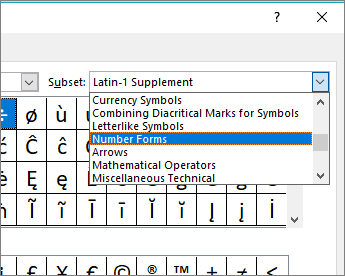

Microsoft word symbols at end of liines how to#
How to remove and replace characters in a document, including those originally intended for setting layout and formatting. One notable solution is to use the Unicode no-width space.(e) Removing Unwanted Characters and Space in Microsoft ® Word Documents There are still other solutions for pre-Word 2002 users. For some people, this approach provides better results than simply reducing the font size of the space.

Word still knows it is there, and will treat it as a natural breakpoint if necessary when wrapping text. The space effectively disappears on the screen. In the By box to the right of the Spacing drop-down list, choose a high value, such as 5, 10, or even 20 points.Using the Spacing drop-down list, choose Condensed.The Character Spacing tab of the Font dialog box. Make sure the Character Spacing tab is selected.The result is spaces that are visually imperceptible, but word wrapping as you would expect.Īnother potential solution is to use a single space after the solidus, but instead of decreasing the point size, simply "condense" the spacing of the space: The font sizes of the spaces can then be decreased to 1 point. The approach used by many people is to place a non-breaking space just before the solidus and a regular space just after it. This works great, unless your text is Justified or Right aligned, instead of Left aligned. Many users have tried different solutions, such as putting an optional hyphen after the solidus and formatting it as white text. Of course, users of earlier versions of Word still have a problem with getting their words to wrap properly. This is exactly what was needed and expected. If you place one after the slash in "overreacting/underreacting," then only the word "underreacting" will wrap to a new line at the end of a line. Beginning with this version of Word and continuing in Word 2003, the No-Width Optional Break works exactly as expected. For the vast majority of Word users, the No-Width Optional Break was worthless. Unfortunately, the No-Width Optional Break didn't work as expected in Word 2000 it apparently only works as expected in Asian versions of Word. (You can find this symbol by choosing Insert | Symbol | Special Characters.) Finally! A break that would occupy no width, but allow a user to mark a point where a break should occur if one was necessary due to normal word wrapping. In Word 2000 Microsoft introduced a special symbol that brought great hope to users everywhere: the No-Width Optional Break.


For instance, instead of using "overreacting/underreacting," you would change the writing to be "overreacting or underreacting." The need for word wrapping after a solidus is still sorely needed, especially with the advent of long URLs in technical writing. Some people believe that the best solution is to simply not use the solidus to combine words. Unfortunately, Word doesn't do this automatically. A much better solution, of course, would be to leave "overreacting/" on one line and move "underreacting" to the next line. This means that if it occurs at the end of a line, the entire word is moved to the following line. In some types of writing, the slash character (solidus) is used between words, as in "overreacting/underreacting." Since there are no spaces in the combined words, it is seen by Word as a single word.


 0 kommentar(er)
0 kommentar(er)
